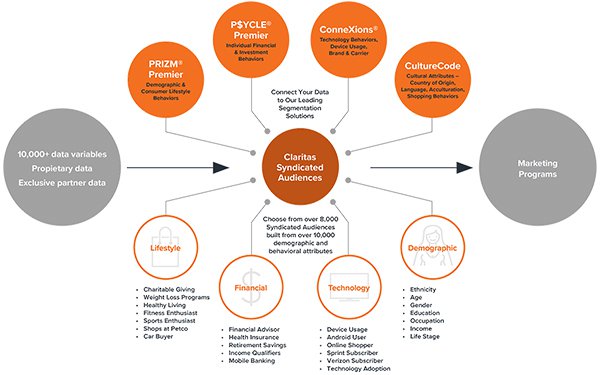
Claritas developers have created an AI-driven
audience optimization model for email so marketers can further personalize messages and reach the ideal audiences. It also determines new audience segments in near real-time and has been known to
boost conversion rates by as much as 30%.
AI for Acquisition Audiences rolled out Monday, said Quinn Jalli, senior vice president of email and digital products.
“Analytics teams
typically used traditional machine-learning technologies to broadly build targeted audiences per campaign for new products and features,” he said. “They just couldn’t determine how
to improve targeting on a case-by-case basis with the speed required.”
Real-time optimization capabilities were made possible through Claritas’ Identity Graph and Clair, the
company’s advanced AI engine. Brands have seen significantly greater email open, click-through, and conversion rates.
advertisement
advertisement
Claritas realized it could build audiences based on a client’s
customers’ profile, but AI enabled the company to build audiences that resembled but did not include their clients’ customers. It also allowed them to take a sample of all consumers across
the U.S. and let the AI technology determine the best audience for the product or service. They found segments that the company did not realize it should target.
Data targeting continues to go
through major changes, shifting significantly toward artificial intelligence (AI) and machine learning (ML) technologies. Claritas followed that shift and combined the technologies with demographic
market areas (DMAs) and other data triggers.
Jalli said Claritas clients are seeing between 20% and 35% in opens and 50% increases in clicks. The company is working to integrate this
technology into each client’s campaigns.
Advancements can now tell marketers which type of audience to target and what type of consumers will respond. Eventually companies will move
toward AI reasoning to determine audiences, but Claritas is not there yet.
The personalized channel has proven to boost conversion rates by as much as 30%, Jalli said, adding that proprietary
datasets rely on more than 2 billion devices and 10,000 demographic and behavioral insights that measure about half a trillion consumer interactions annually for nearly 10,000 marketers.
So
much good direct-to-consumer (D2C) data comes from email campaigns that the company began applying it to other media such as social. “We don’t get data on who engaged with a Google display
or Facebook ad,” he said. “But we do know who clicked and converted in an email.”
Claritas uses opens, clicks and conversions to determine actions, but now combines that data
with PRIZM Premier, a marketing segmentation system that creates 68 unique consumer household segments based on a combination of socioeconomic factors, education, lifestyle preferences and
consumer behaviors.
“If we sent an email offer for a Ferrari, every person would open that email,” he said. “But how many have the wherewithal to click and
convert?”
It took Claritas developers about one year to create the platform and bring together all the data.
The platform uses an identity graph built through acquisitions
and internally with patented AI technology. All developers work together to refine campaign targeting and optimize marketing performance.